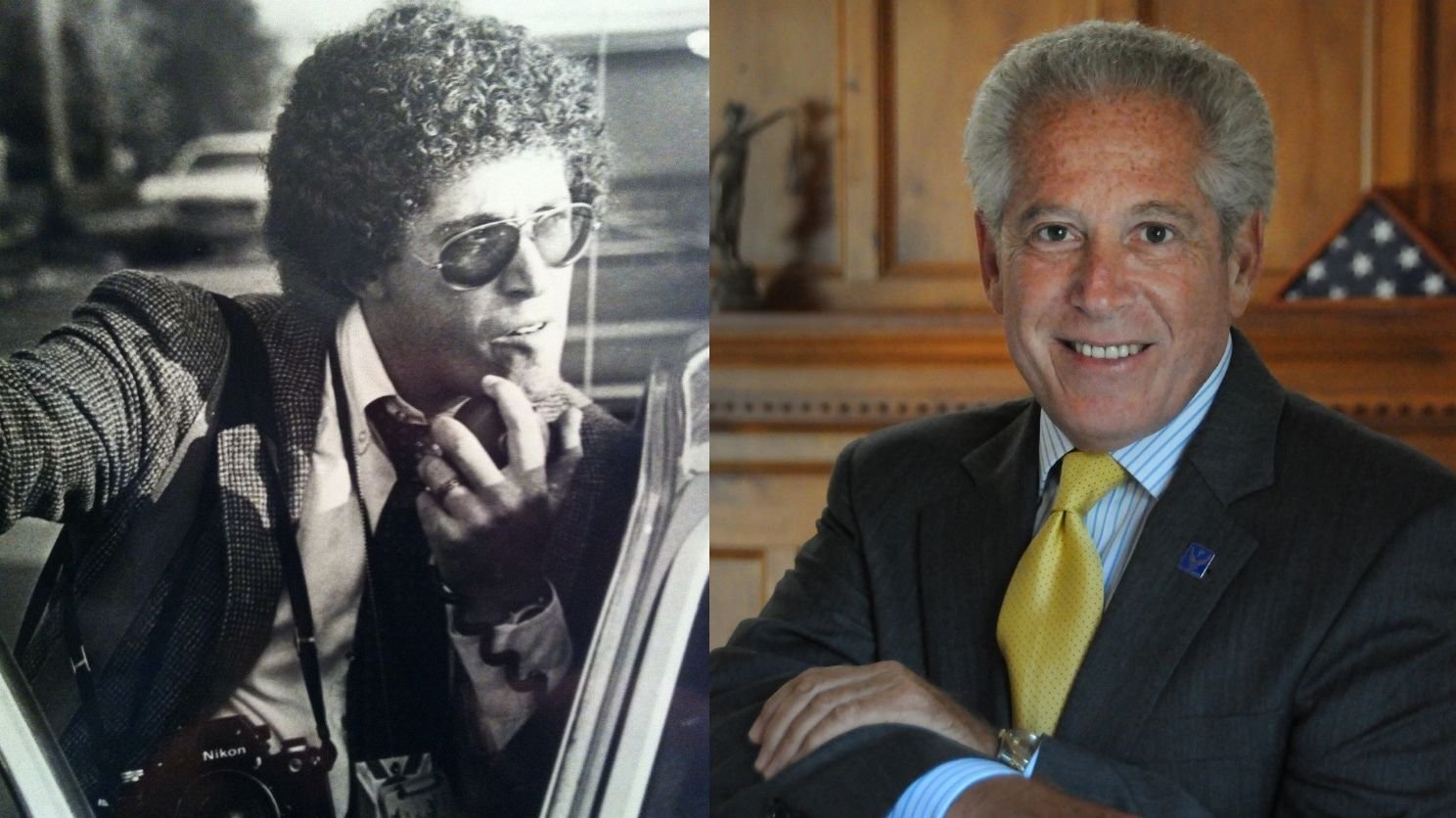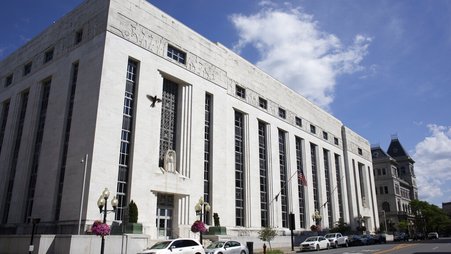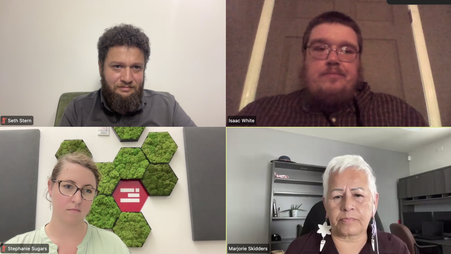For decades, one organization has dedicated itself to protecting the rights of news photographers and videographers. The National Press Photographers Association has led countless First Amendment battles to protect visual journalists’ right to document and the public’s right to see and hear the news.
The organization’s general counsel, Mickey Osterreicher, is often at the forefront of those fights. He and NPPA have protected the First Amendment right to record in public, limited senseless government regulations restricting photography and recording, and even won a groundbreaking settlement with the New York Police Department over its treatment of journalists at protests.
But recently, NPPA announced that it faces financial difficulties. Freedom of the Press Foundation (FPF) spoke to Osterreicher about NPPA’s work and the impact on the First Amendment if it shutters. You can read our full conversation below, and you can donate to NPPA’s programs here.
You’ve been NPPA’s general counsel since 2005, and you’ve also been a news photographer. How have the legal issues facing visual journalists changed over the years, and what are the most pressing issues they face today?
Both from a practical and legal standpoint, being a journalist was a lot simpler when I was a photojournalist. One of the biggest challenges I now face is trying to answer the question from police and lawmakers, “Who is a journalist?” and, during a protest, “Who gets to stay after an order to disperse?”
But once those press access rights have been attained, what good is it if visual journalists cannot make a decent living after risking their health and safety because their images are being misappropriated without permission, credit, or compensation? So it is a combination of dealing with First Amendment and copyright issues that keeps me up most nights.
That is to say nothing of the exponential use of generative artificial intelligence that has economically impacted the market for news photography as well as creating ethical challenges for visual journalists and public perception.
Tell us more about how the rise of AI-generated images and deepfakes is affecting the work and rights of visual journalists.
For visual journalism, generative artificial intelligence is the worst of both worlds, where millions of images (still and video) are ingested to train AI models without payment to the creators and the public can no longer believe what they see without wondering if what they are viewing is a true depiction of what really happened or an artificially created image. Even worse, this technology now provides an additional layer of ambiguity to those who claim that actual images of real events are “fake news.”
You’ve trained many law enforcement officers about journalists’ First Amendment rights, especially when they’re covering political conventions and protests. What are the most important things for police officers to know about press freedom, and how is NPPA uniquely positioned to provide that training?
I have three goals when training police and journalists about press freedoms. One: that police are not sued for abridging First Amendment rights of citizens and journalists, costing taxpayers dearly with money that could be better spent for police recruitment and retention or equipment. Two: that journalists are able to do their jobs without being harassed, injured, or arrested. Three: that the public is informed, which is the basis for the First Amendment — that being the desire by the founding fathers for the right of the public to receive information, and be an informed electorate.
As “the voice of visual journalists” since 1946, NPPA is uniquely positioned to foster improved police-press-public relations in an era when it is most needed by instilling greater respect for the roles each plays in our democracy. We’ve provided these trainings to law enforcement agencies nationwide for almost 20 years, with scores of departments and hundreds of officers being trained, including the entire Minnesota State Patrol as part of the settlement terms of a federal civil rights lawsuit, as well as the start of training with the NYPD regarding the new policies and procedures implemented as a result of the settlement of our lawsuit.
Mickey Osterreicher“Should our voice be muted, its silence will be deafening.”
What I believe also adds to NPPA’s credibility is my background as a photojournalist with over forty years’ experience in print and broadcast, my experience as a First Amendment attorney, and my understanding of the challenges facing law enforcement from having been a uniformed reserve deputy sheriff with the Erie County Sheriff’s Office since 1976 and working closely with law enforcement through various associations and committees.
That experience working with police departments — which not many press freedom organizations have — has also allowed you to get involved in many other issues that are important to all journalists, not just visual ones. Tell us about your work on police radio encryption and other ways you’re able to leverage the work you’ve done training police departments.
The encryption of police radio transmissions is a growing problem nationwide, because for almost a century, newsrooms and journalists have relied on the monitoring of those broadcasts to cover breaking news and other matters of public concern.
One place where such coverage is critical is New York City, where so many newsworthy events occur and where, because of the congested vehicle traffic, time is of the essence in getting to the scene. A few years ago, the NYPD announced that it would begin encrypting its transmissions. NPPA joined a consortium of news organizations asking to work with NYPD to allow journalists to continue to have real-time access to those broadcasts. Despite meeting with police officials, testifying before the city council and submitting a white paper on the subject, the NYPD has refused to discuss this issue further, and many of the important police frequencies have already been encrypted.
The consortium then supported a state bill that would allow for press access. That bill passed both houses and is awaiting the governor’s signature. NPPA has also worked with press groups around the country to address this issue.
Another problem we helped to solve was an exemption for journalists to a New York law that banned anyone in the state (except for certain “eligible professions”) from the “purchase, taking possession of, sale, exchange, giving or disposing of body armor.”
Additionally, NPPA was instrumental in opposing an Arizona bill that barred anyone recording police from getting closer than 15 feet to an officer without their permission. I drafted several letters to the legislature joined by 30 press organizations cautioning against the unconstitutionality of the proposed law, which was ultimately passed after the measure was amended to an 8-foot distance. I then worked with the American Civil Liberties Union and Arizona Broadcasters Association to obtain a permanent injunction prohibiting enforcement of the law. NPPA has also filed amicus briefs in two other constitutional challenges to similar laws in Indiana and Louisiana.
When the White House restricted the Associated Press’s access over its use of the term ‘Gulf of Mexico’ (a move that NPPA and FPF condemned), it raised concerns about the chilling effects of such retaliation on journalists. If presidents can exclude outlets or photographers from the press pool for editorial decisions, what does that mean for press freedom and the role of visual journalists?
As NPPA stated, such actions by the administration are unacceptable as both an attempt at prior restraint and a blatant retaliation and chilling abridgment of the First Amendment rights of the AP and its journalists.
Unfortunately, we have seen both the federal district court as well as the circuit court hearing the appeal in this case give wide latitude and discretion to the White House as to who it admits to cover certain events. Additional fallout from this has been the White House Correspondents Association losing its long-standing control over the press pool rotation as well as other “disfavored” media outlets being barred from inclusion in the pool.
All these actions taken by the administration are having a chilling effect on press coverage of the government and are eviscerating press freedom. The NPPA continues to work with news and press freedom organizations to advocate and support the right of the public to be informed.
Over the years, NPPA has had to oppose a number of laws that prohibit or limit taking pictures in public places as well as using drones to capture aerial footage. What should journalists do if they’re stopped and told they can’t take pictures or record in public?
Our staunch advocacy has led to the right to photograph and record in traditional public forums being “clearly established” in three-quarters of the U.S. Circuit Courts of Appeal, which is key to successfully bringing civil rights claims against those who try to limit or interfere with those rights.
While NPPA was initially successful in challenging Texas drone regulations, that decision was reversed on appeal. But we have been effective in ensuring that language protecting the First Amendment rights of journalists to use drones for newsgathering be included in government regulations.
NPPA has provided extensive training as to what journalists can do if they’re stopped and told they can’t take pictures or record in public. The foremost advice is to meet with law enforcement on a regular basis to ensure that these rights are honored by police and to discuss how best to improve police-press interactions. While in the field, it is crucial to maintain situational awareness and pay attention to police and crowd movements to avoid being encircled (kettled). Always have an exit strategy, as it is always better to move to a different location than be arrested. If police stop or question you about your activities, make sure to identify yourself as a journalist.
What will journalism lose if NPPA is forced to close its doors?
It would be a significant loss to not only visual journalists but to journalism itself if NPPA were to cease as an organization. For almost 80 years, NPPA has strongly advocated for the rights of visual journalists and now more than ever that unique voice is needed as more journalists are required to report not only with words but images. It also comes at a time when the importance of truthful images could not be greater.
While there are many other organizations supporting the First Amendment and press freedoms, none is more exclusively dedicated to the advancement and protection of visual journalism in its role as a vital public service than the NPPA. Our code of ethics is often cited as exemplary of what visual journalism should strive to achieve. Should our voice be muted, its silence will be deafening.
Donate to NPPA’s programs here to help protect the rights of visual journalists and the public’s right to know.





